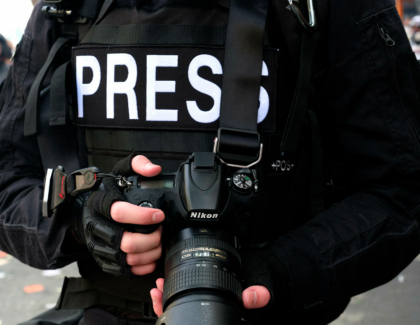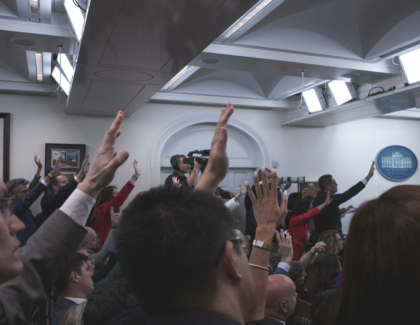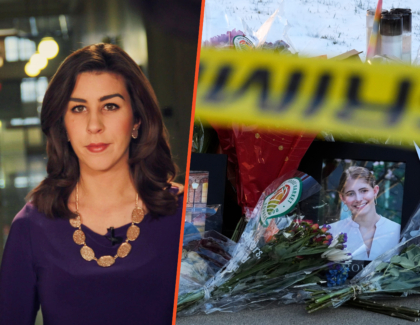Sign up for the daily CJR newsletter.

You can make the case that news organizations shouldn’t endorse political candidates (“most people don’t read those columns, and those who do aren’t persuaded by them”). Or you can make the case that endorsements are a noble civic exercise (“our editorial board’s expertise is valuable, and readers should know where we stand”).
What you probably shouldn’t do is declare that you’re stopping endorsements, then turn around and publish a muddled one without explaining why.
Which is what the New York Times did this week.
Last August, the Times announced it would no longer endorse local candidates. “While elections everywhere remain critical to the lives and experiences of our audience, the editorial board is ceasing the endorsement process for New York elections,” stated Kathleen Kingsbury, head of the Opinion section. She offered no explanation, just an addendum to assure critics that this was still the NEW YORK Times: “We remain a journalistic institution rooted in New York City, both historically, today and in the future.”
Even at the time, this policy seemed odd. Voters tend to be less engaged in local elections than presidential or congressional races, so presumably, an endorsement in a mayoral or city council race would have more impact. And it’s not like the Opinion section is strapped for resources. A recent Charlotte Klein piece in New York magazine noted the department employs almost two hundred staffers.
So imagine our surprise this week when the Times weighed in on New York City’s hotly contested June 24 primary. The unsigned piece featured a quiver of darts for mayoral candidates, leaving many readers befuddled about how the Times thinks they should vote. Notably, the editorial also said that the current slate “lacks any candidate who seems likely to be the city’s next great mayor. For that reason, we are not endorsing a candidate.” (Emphasis mine.)
So the Times wasn’t endorsing local candidates as of last August, but now it is thinking about endorsing them, or it would endorse some if there were any great ones, but since there aren’t any… well, you get the idea.
Kingsbury, the section’s editor, told me in an interview Wednesday that she had been “imprecise” with her statement last summer: “With the benefit of hindsight, I realize I should have been more specific.” The section will no longer do “pro forma endorsements,” she said. Then, she added, “we’re going to reserve the option to make endorsements in the future…but we’re not going to do it as automatically.”
So I asked her: If one of the mayoral candidates had stood out head and shoulders from the pack, would the Times have endorsed that person? “Yes, of course, we were open to that possibility,” she said.
The Times concluded its editorial by saying that the board would “be rooting for a stronger field in the 2029 election.” Stay tuned for an endorsement or two by then.

President Trump rushed National Guard troops to California earlier this month amid protests against his immigration policies. In their haste, Trump’s deputies failed to provide adequate accommodations for soldiers, forcing many of them to sleep cheek by jowl on the floor of a federal building in Los Angeles. Photos of the situation, leaked by a confidential source to San Francisco Chronicle reporter Matthias Gafni, spread quickly on social media.
And as the images spread, so did the falsehoods. Laura Loomer, the Trump adviser who has never met a conspiracy theory too crazy to spout, told her 1.7 million X followers that the pictures were likely generated by artificial intelligence. Elon Musk’s AI tool on X, known as Grok, fell into the same trap, hallucinating that the photos were from Afghanistan, 2021: “Claims linking them to the 2025 Los Angeles deployment lack credible support.”
Loomer and Grok are too sloppy or lazy to do the actual work, but Gafni wasn’t. In a follow-up, show-your-work piece, he detailed how the Chronicle confirmed the authenticity of its reporting by matching images of the building and the soldiers’ patches to previously published photos. Even the Defense Department grudgingly acknowledged that the photos were real, forcing Grok to eventually admit the same.
As Emilio Garcia-Ruiz, Chronicle editor in chief, said, the efforts to discredit the photos are “part of a larger attempt to damage the reputation of hardworking journalists and publish a false narrative that fits a political ideology at the expense of honesty.”

Elon Musk and his DOGE functionaries took a literal and metaphorical chainsaw to the federal budget. Musk is mostly gone from Washington, but in his wake, officials like National Institutes of Health director Jay Bhattacharya are fumbling through the wreckage. And while it’s important for journalists to tally the broad numbers—such as the ten thousand HHS employees fired and another ten thousand who’ve resigned—reporters also need to show how those cuts are devastating citizens’ lives.
That’s why you should read this Carolyn Y. Johnson story (free link here) in the Washington Post about Richard Schlueter, a fifty-six-year-old Georgia man whose head and neck cancer has spread to his lungs. Schlueter was scheduled to receive experimental cell therapy as part of a clinical trial. Everything was proceeding apace, and his medication “was in a freezer, nearly ready to go.” Then, earlier this month, “his NIH doctor informed him that it would now take eight to 10 weeks because of cuts to essential lab personnel.”
Those are weeks that Schlueter may not have. “I’m petrified,” he told Johnson. “My cancer is on the move.” And while he and other patients wait for staff to be restored, Bhattacharya appears to be in no big rush. “We are reviewing each termination case carefully and some individuals have already been reinstated,” he stated recently. “As NIH priorities evolve, so must our staffing to stay mission-focused and responsibly manage taxpayer dollars.”

On New Year’s Day, 2024, Rashad Nelson was behind the wheel of a Volkswagen SUV when his “suspicious” lane change caught the attention of a police sergeant from Monona, a town near Madison, Wisconsin. The cop turned on his emergency lights, but Nelson sped off with his two passengers, running through a stoplight and reaching over 100 mph. Moments later, the VW smashed into a tree, killing all three inside.
Such chases are business as usual for the small department, as Capital Times reporter Danielle DuClos explored in this excellent piece that ran last week. There are only twenty officers on the force, but these leadfoots have chalked up more than two hundred high-speed chases in the past four years—an average of one per week—in a town with around eighty-five hundred residents. And as in the chase that killed Nelson and two others, it doesn’t take a violent criminal or suspected felony to send patrol cars zooming in and out of traffic. Nelson was being pursued for reckless driving, a misdemeanor that on first offense wouldn’t elicit more than a $400 fine.
Monona’s police chief didn’t agree to an interview, nor would he address the injuries that innocent bystanders and officers themselves have suffered. But in a statement, he praised his department for deterring a “criminal culture…that believes that you can commit a criminal act and simply flee from police.”
Hat tip to the weekly Local Matters email, a service of Investigative Reporters and Editors, which highlights excellent reporting from around the country (including this week’s Wisconsin item). You can sign up here. And if you have a suggestion for this column, please send it to laurelsanddarts@cjr.org. We can’t acknowledge all submissions, but we will mention you if we use your idea. For more on Laurels and Darts, please click here.
Has America ever needed a media defender more than now? Help us by joining CJR today.







